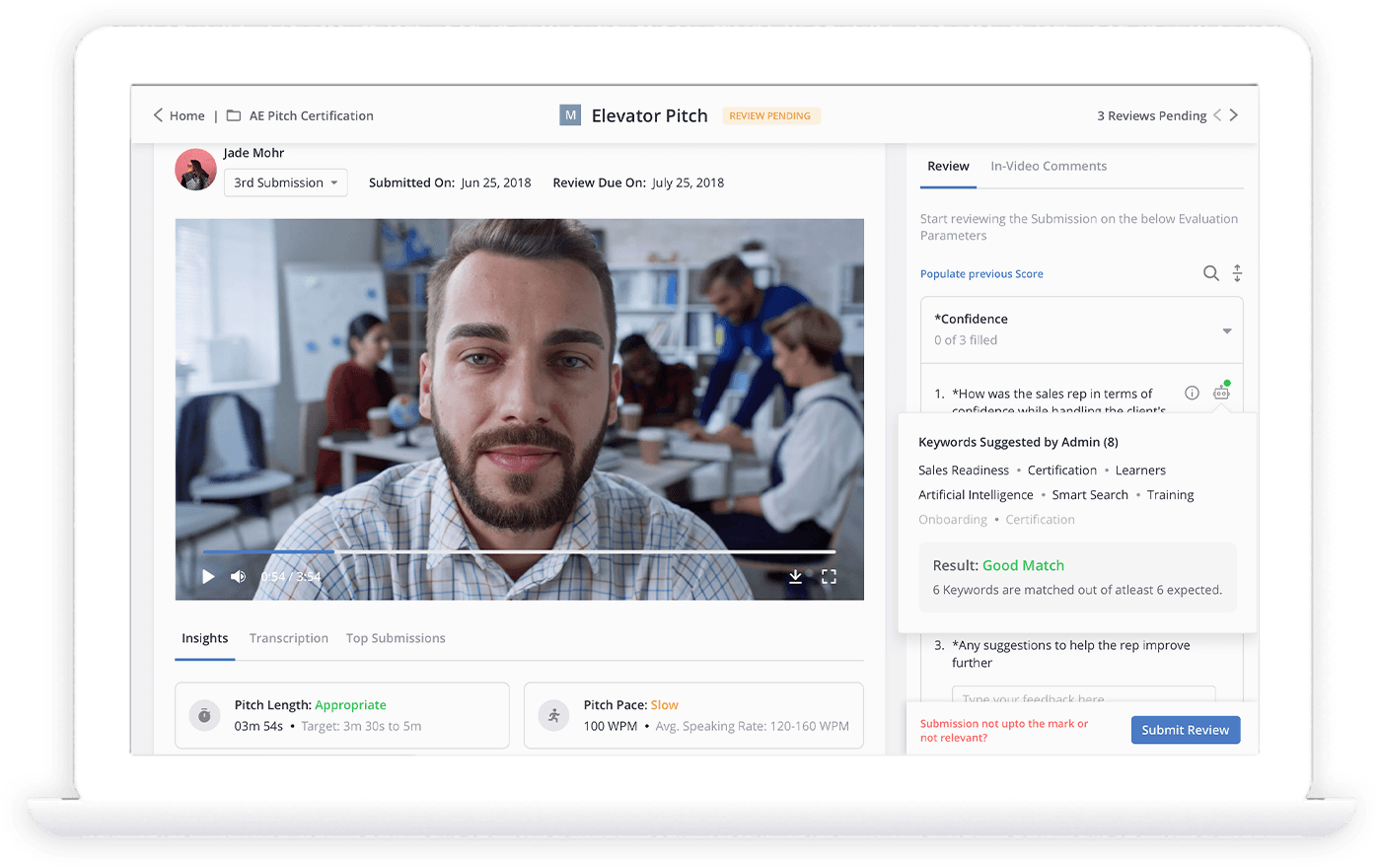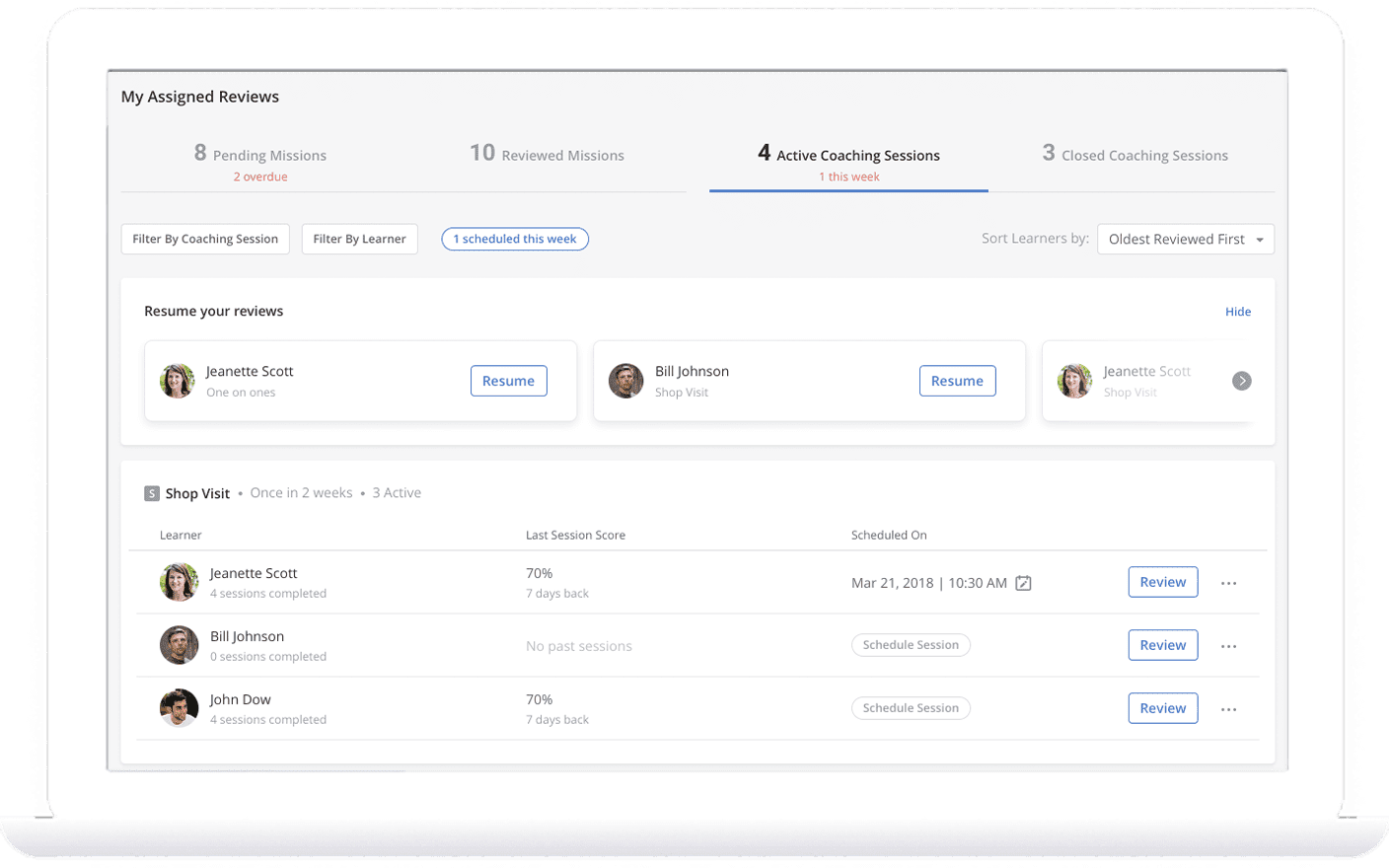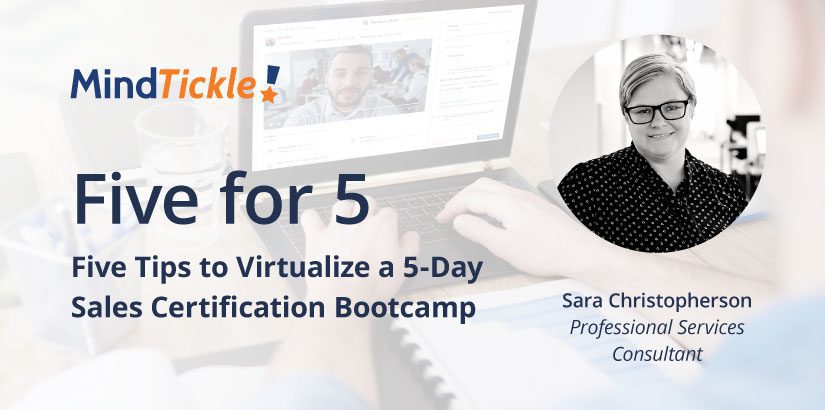The Failproof Framework for a Sales Onboarding Program
Designing an effective sales onboarding program can be challenging. Finding a balance between the time new hires spend on self-paced learning, bootcamp or instructor-led training, on-the-job learning and one-on-one coaching seems like an impossible formula to perfect. Sales leaders need sellers ramped as quickly as possible and on top of that, they’re challenged to provide effective and fresh learning to their existing salesforce so they’re educated on changing markets, new products or solutions and an ever-changing landscape.
While it’s tempting to look at new hire sales onboarding and ongoing learning programs as two separate beasts, they are actually natural extensions of one another — especially during planning and design stages. Here at Mindtickle, we refer to all ongoing learning as “everboarding” because learning should be a continuous journey. In this blog post, we’ll explore the benefits of blending sales onboarding and everboarding strategies to create a cohesive and effective learning path for your sellers.
Building a framework
The essential first step to any effective onboarding program is evaluating your current state, where you want to go, when you want to get there and how you’ll do it. Here’s our recommended framework for transitioning from a static sales onboarding plan to a completely dynamic everboarding approach.
1. Map sales process and activities to competencies and capabilities
Before you design a slide or write a word, map out the activities sales reps, solutions consultants, etc. do. Start by listing each activity by sales stage. From there, define the competencies and skills or capabilities necessary to demonstrate for completion. This ensures your program is focused on what reps need to be successful while filtering out unnecessary topics. Additionally, mapping can also track trends and learner knowledge gaps.
2. Outline a timeline and priorities
Ask sales leaders what reps need to do their first day, week, month or whatever cadence works best for your organization. As you evolve toward an everboarding approach, look at quarterly and yearly strategic goals, determine the selling capabilities needed to achieve them, and then design your program with those in mind.
As you identify topics, prioritize them by what reps need to recall or apply. Recalling or knowing information is different than being able to apply that knowledge. Defining where topics belong prioritizes them and identifies learning activities. Remember, people typically forget 70% of the information they learn within a week, and 87% will forget it within a month. Prioritizing the most important topics will help you determine the appropriate enablement methodology, recall or application.
3. Determine the best delivery method
As an enablement professional, you know everyone learns in a different way. The same concept is true for content. Not all content should be delivered the same way. When designing your program, consider both learners and content when determining your enablement methodology. Some content may be appropriate for simple knowledge delivery via a slideshow, but other topics may require a scenario-based approach. For example, including a video of a great pitch is more effective than a few slides about the pitch content.
4. Get leadership buy-in
Be sure to engage sales leaders upfront. They are experts at what sales reps do every day. You’ll need their help to map the activities mentioned above, but you’ll also need their buy-in to make your program successful. Leaders care about three main things:
- When will my new hire be ramped? Be sure to clearly define ramp time. Work with leadership to determine what reps need to master before being considered fully ramped.
- What’s in it for me? Let them know how effective enablement helps them meet their goals.
- How much time will enablement activities take away from selling? ROE (return on enablement) is important. Understanding how programs tie to sales metrics helps make the case for rep time spent in enablement activities instead of active selling.
Blending sales onboarding and everboarding
Creating a great onboarding experience is crucial to building a culture of learning within your sales organization. When planning onboarding, think about the content reps need to get started, but also consider the overall experience. The rep’s experience sets the standard for participation in the entire enablement program. Ensure manager buy-in, content is engaging and applicable, and reps clearly understand expectations.
- Set the standard
Work with leadership and managers to establish a culture where onboarding is mandatory. In our experience, the most successful reps and onboarding programs have 90-100% completion and are often reinforced with incentives such as bonuses with accounts held until it’s completed. To create a learning culture, there should be an expectation that enablement activities are valuable, applicable and required. - Make it engaging
While it’s tempting to use the video from your last team call, think about the learner experience. Break content into bite-sized chunks, and pull out key messages or underscore critical objectives. We’ve found that shorter content has a considerably higher completion rate, especially when it’s under five minutes. Break up videos or slide decks with knowledge checks and reinforcement questions. A few questions between topics is a great way to keep learners active and engaged. - Practice, reinforce, repeat
Provide a safe space and multiple opportunities for reps to practice the skills they’ll need to be successful. Scenario-based activities not only allow reps to practice their pitches and internal talk tracks but also opportunities for managers to provide constructive feedback that can be implemented immediately. Using tools such as Mindtickle’s role-play functionality for video-based sales pitch activities, or our 1:1 scenario-based coaching helps reps gain confidence in their selling abilities and provides managers instant visibility into skill gaps so they can course correct.


Any good sales leader knows that onboarding a rep is just the first activity in any readiness program. While there are key milestones for the first 30, 60 and 90 days, sellers need ongoing training and practice reinforced throughout the year to keep their skills sharp.
Find what works for you
Like most things in a modern sales organization, there’s no one-size-fits-all approach to enablement. It’s important to take these insights and think about how you can make them work for your business.
Factors like audience, culture, available content, and existing processes play a role — and it’s important to consider sellers’ maturity when building your sales onboarding program. It could be the difference between a heavier focus on product knowledge versus a more in-depth readiness program focused on basic sales skills.
Whatever your approach, the number one goal should be to build a culture of learning so that your reps are engaged beyond their initial 30, 60, or 90 days on the job.



